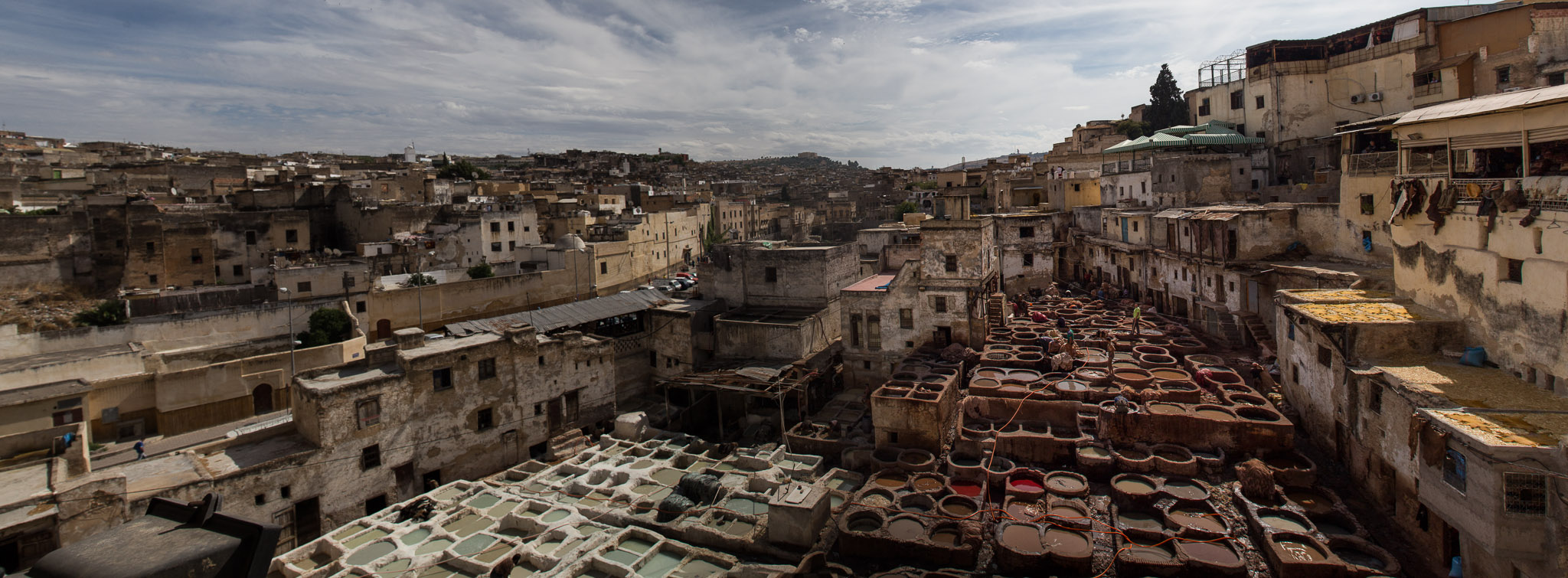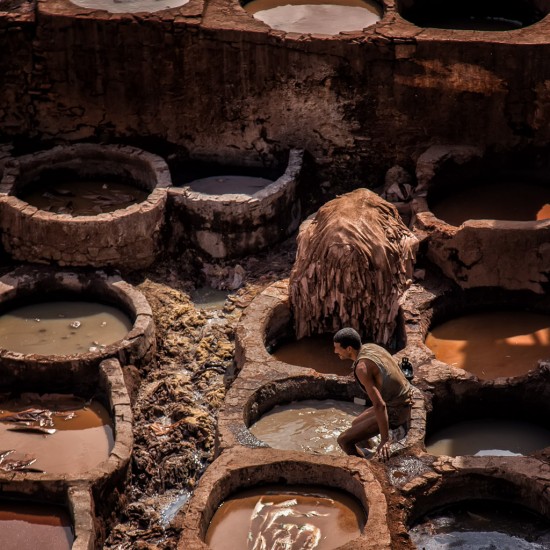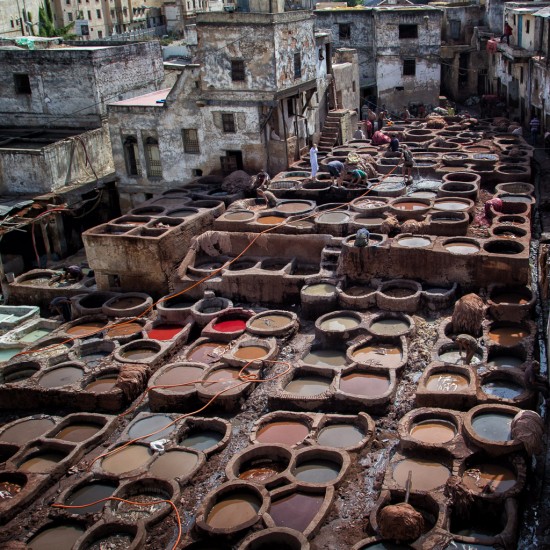In Morocco, leather is the largest major export to partners like Spain, France and India with up to 100 million slippers or shoes exported annually. There are three tanneries in Fez that have been washing, treating, smoothing and coloring animal skins into soft leather for over a thousand years. As we approached this tannery in the Medina, the smell emanating from the tanning vats was somewhat overwhelming. Read on (or not) to understand why…
The skins are collected, sorted then soaked for two to three days in large specialty vats that contain a mixture of cow urine, quicklime, water, and salt until they are clean. Once clean, they are laid out to dry (see right side of panoramic image above). Once dried, the skins are then soaked in other vats that are a mixture of water and chicken feces which contains ammonia that softens them and makes them supple. The tanner then uses his bare feet to knead the skins for three hours until they have reached the desired softness.
The skins are then moved to the vats used for dyeing. The tanneries in the Old Medina continue to use natural vegetable dyes including poppy flower (red), indigo (blue), henna (orange), cedar wood (brown), mint (green), and saffron (yellow). Other materials used for dyeing include pomegranate powder, which is rubbed on the skins to turn them yellow, and olive oil, which will make them shiny. The skins are left in the dyeing vats for about one week. Each week the dyes are changed out for different colors.
Once they fully absorb their color they are taken to be stretched on wooden frames until they dry. The total tanning process takes about 20 days from start to finish. The life of a tanner is not an easy one. Not only is it considered to be one of the hardest and dirtiest professions within the Fez, it is also incredibly labor intensive.
Sources for this information:
https://www.ouche.org/fall2010pnca/material/design-strategies/a-more-in-depth-look-at-the-tanneries-of-morocco-presentation/



10 Comments on “The Leather Tanneries of Fez”
I can only imagine the life of the tanner being shortened by absorbing all the elements that are required to tan. Amazing that this is such a hands on process.
Not very environmentally safe, that’s for sure…
Amazing!!
Thank you Rachel…
Fascinating process and pictures. I’ll never look at leather in the same way again. Thank you!
Thank you. It does make one think twice a bit about wearing leather.
The panoramic shot is beautiful. I’m especially grateful because I couldn’t stomach the tannery tour and never saw this in person. Thank you for all the info too. The only thing you did not capture is the smell, and for that I am truly grateful. 🙂
You’re welcome…
Wow Marty, I love the view of all the vats with the buildings. It shows how every
inch is used in Fes. Since I could not handle the smell, and only stayed 30 seconds
I love the description of the process. Thanks for all your work.
Thank you.